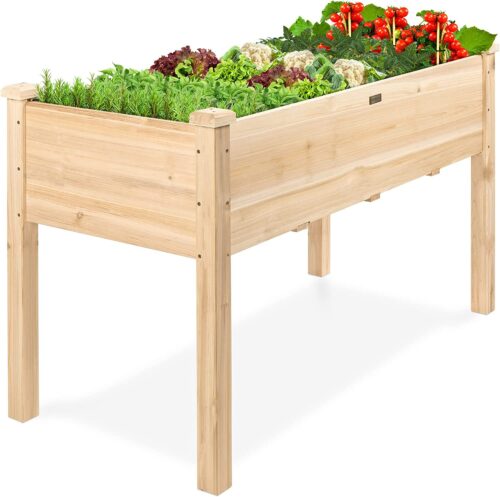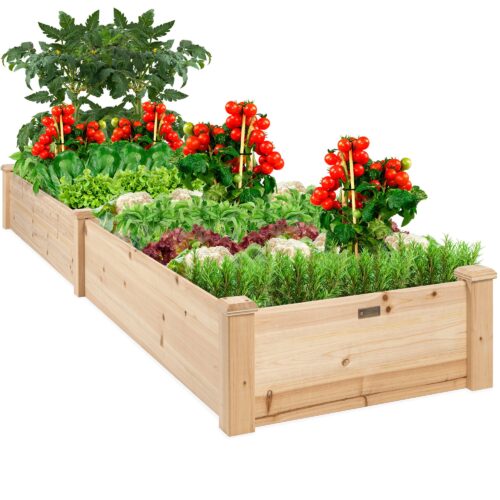Gardening
Benefits of Raised Garden Beds
If you’re thinking about starting a garden, you might be wondering whether to use raised beds or traditional in-ground gardening methods. Raised garden beds have become increasingly popular in recent years, and for good reason. They offer numerous benefits over traditional gardening methods, making them an excellent choice for both novice and experienced gardeners alike.
In this article, we’ll explore the advantages of raised garden beds and how they can help you grow a successful garden. We’ll also provide some background information on raised gardens and answer some frequently asked questions about this gardening method.
Background of Raised Gardens
Raised garden beds are essentially a garden plot that has been raised above ground level and bordered by some type of enclosure. Enclosures can be made from a variety of materials, such as wood, brick, concrete blocks, or even stones. They can be designed in any shape or size to fit your available space and can be placed on any level surface, including soil, concrete, or asphalt.
Raised beds can be filled with any type of soil, which allows you to customize the growing conditions for your plants. You can use a combination of compost, peat moss, vermiculite, and other organic materials to create the perfect soil mix for your plants. This is especially useful if you’re dealing with poor soil quality or soil that is contaminated with chemicals.
The Benefits of Raised Garden Beds
-
Improved Soil Quality
One of the biggest advantages of raised garden beds is the ability to create a customized soil mix that is optimal for plant growth. The soil in raised beds is typically looser and better-draining than the soil in traditional gardens, which can be dense and compacted. The loose soil in raised beds allows roots to grow more easily, providing better access to nutrients, water, and oxygen.
-
Better Drainage
The elevated nature of raised beds ensures better drainage than traditional garden plots. The soil in raised beds is above the natural water table, which prevents water from pooling and causing root rot. In addition, the enclosure surrounding the bed helps to prevent soil erosion and runoff.
-
Easier Access
Raised garden beds are typically designed to be taller than traditional garden plots, which can make them easier to access for people with physical limitations. This is especially helpful for older gardeners or those with mobility issues, as it allows them to tend to their plants without having to kneel or bend down as much.
-
Pest Control
Raised garden beds can be covered with netting or other materials to protect plants from pests such as birds, rabbits, and squirrels. In addition, the enclosed space can be easier to monitor for pests and diseases, allowing for more effective treatment if a problem does arise.
-
Longer Growing Season
The elevated nature of raised garden beds allows them to warm up faster in the spring and stay warmer longer in the fall, extending the growing season for your plants. In addition, the ability to control soil moisture and temperature in raised beds allows for earlier planting and later harvesting.
-
Aesthetically Pleasing
Raised garden beds can be designed in a variety of shapes and sizes to fit your personal style and garden space. They can add visual interest to your yard or patio and can even be used as a focal point for your landscape design.
FAQs
What is a raised garden bed?
A raised garden bed is a type of gardening structure that involves creating a planting area that is elevated off the ground, usually by constructing a frame around it.
What are the benefits of using a raised garden bed?
Raised garden beds offer a number of benefits, including improved drainage, better soil quality, easier weed control, and easier access for planting and harvesting.
What materials can I use to build a raised garden bed?
Raised garden beds can be constructed using a variety of materials, including wood, bricks, concrete blocks, or even recycled materials such as old pallets or corrugated metal.
How deep should my raised garden bed be?
The depth of your raised garden bed will depend on the types of plants you plan to grow. In general, a depth of at least 6-12 inches is recommended for most vegetables and herbs.
Do I need to line my raised garden bed?
It is not necessary to line your raised garden bed, but some gardeners choose to do so to prevent weeds from growing up through the bottom of the bed.
How do I fill my raised garden bed with soil?
You can fill your raised garden bed with a mixture of soil, compost, and other organic materials. Be sure to choose a high-quality soil mix that is appropriate for the types of plants you plan to grow.
How do I maintain my raised garden bed?
To maintain your raised garden bed, you should regularly water your plants, weed the bed to prevent competition, and add organic materials such as compost to keep the soil fertile.
What types of plants are best for raised garden beds?
A wide variety of plants can be grown in raised garden beds, including vegetables, herbs, flowers, and even small trees or shrubs. Be sure to choose plants that are appropriate for the amount of sunlight and space available in your raised garden bed.
Can I build a raised garden bed on a slope?
Yes, you can build a raised garden bed on a slope by creating a terraced bed with multiple levels.
How can I protect my raised garden bed from pests?
There are a variety of ways to protect your raised garden bed from pests, including using natural deterrents like companion planting, physical barriers like netting or fencing, and organic pest control methods like neem oil or insecticidal soap.


















